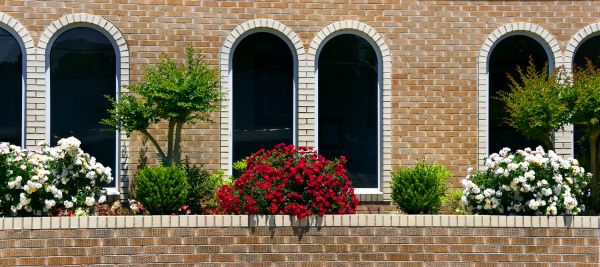Church Mulching Service
Affordable Church Mulching
Church mulching is a vital practice that involves the application of organic or inorganic materials to the soil surface surrounding church landscapes and gardens. This process is essential for maintaining healthy soil, conserving moisture, and enhancing the aesthetic appeal of church grounds. By implementing mulching, churches can create an inviting and serene environment that reflects their commitment to stewardship and care for the earth. Mulching not only contributes to the beauty of the landscape but also plays a crucial role in promoting sustainable gardening practices.
Benefits of Church Mulching
-
Moisture Retention
Mulching helps retain soil moisture by reducing evaporation. This is particularly beneficial during dry seasons, ensuring that plants receive adequate water without the need for excessive irrigation. -
Weed Suppression
A layer of mulch acts as a barrier to weeds, preventing them from receiving the sunlight they need to grow. This reduces the need for chemical weed control methods and helps maintain a neat and tidy appearance. -
Soil Temperature Regulation
Mulch helps to regulate soil temperature by providing insulation. This means that during hot summers, the soil remains cooler, and during cold winters, it stays warmer, providing a more stable environment for plant roots. -
Nutrient Enrichment
As organic mulch breaks down, it enriches the soil with nutrients. This natural composting process improves soil structure and fertility, promoting healthier plant growth. -
Erosion Control
Mulch helps to prevent soil erosion by reducing the impact of rainwater on the soil surface. This is particularly important on sloped areas where soil can easily wash away.
FAQs About Church Mulching
What types of materials can be used for church mulching?
Both organic materials like wood chips, bark, and straw, and inorganic materials such as gravel and stones, can be used for mulching. The choice depends on the specific needs and aesthetic preferences of the church landscape.
How often should church mulching be done?
Mulching is typically done once or twice a year, depending on the type of mulch used and the local climate conditions. It's important to replenish mulch as it decomposes or gets displaced.
Does mulching attract pests?
When done correctly, mulching does not attract pests. In fact, it can deter them by creating a less hospitable environment for insects and other pests that thrive in bare soil.
Can mulching be done around existing plants?
Yes, mulching can be done around existing plants. Care should be taken to avoid piling mulch against plant stems or tree trunks to prevent rot and disease.
Fill out the contact form today to request professional Church Mulching services. Experience the benefits of enhanced moisture retention, weed suppression, and nutrient enrichment, ensuring a beautiful and sustainable church landscape.

